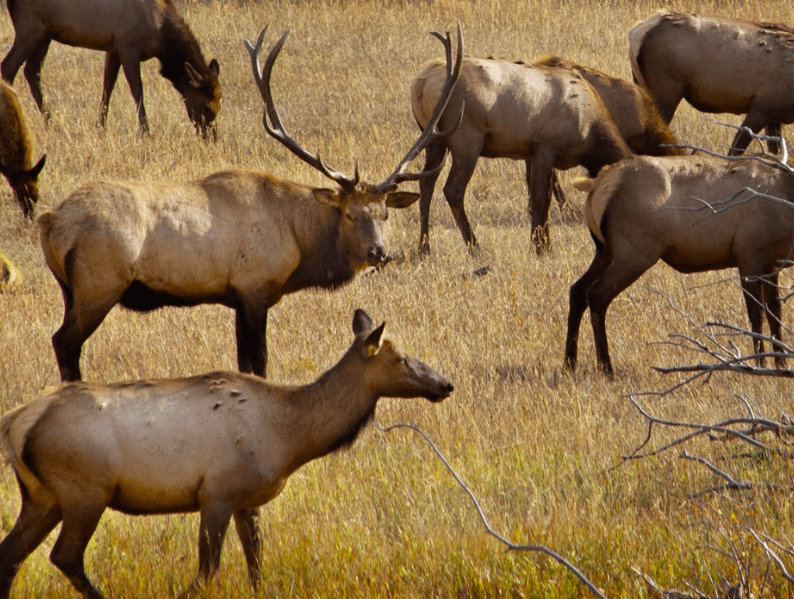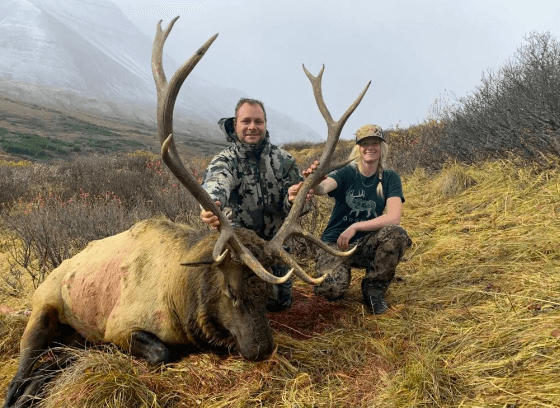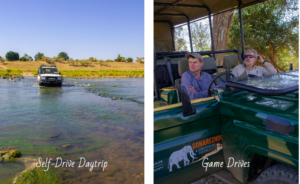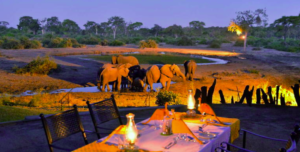
What is an elk?
Elks are a big species of deer that are indigenous to North America and certain regions of Asia. It is renowned for its imposing stature, magnificent antlers (found on males), and habitat in a variety of environments, including woods, meadows, and mountains.
The Cervidae family, which also contains other deer species including whitetail deer, mule deer, and moose, includes elks, scientifically known as Cervus canadensis. They are also frequently called wapiti, a Native American name that means “light-colored deer.”
For millennia, humanity have been captivated by the elk, a gorgeous and strong creature. Elks have become a symbol of the wild and untamed because of their enormous antlers, regal appearance, and gorgeous natural surroundings. We will dig into the world of elks in this detailed post, studying their traits, behavior, habitat, life cycle, ecological value, and the issues they confront in the contemporary world. Join us on this adventure to explore the majesty of the elk.
check out elk hunting full guides in South Dakota, Utah, Alaska for the best hunting tips and prepation.
Taxonomy and Classification of elk.

Elks belong to the scientific genus Cervus and species canadensis. They are part of the family Cervidae, which includes deer, moose, and reindeer. Here is a breakdown of the taxonomy and classification of elks:
Kingdom: Animalia (Animals)
Phylum: Chordata (Chordates)
Class: Mammalia (Mammals)
Order: Artiodactyla (Even-toed ungulates)
Family: Cervidae (Deer family)
Genus: Cervus
Species: Cervus canadensis
Subspecies:
Within the species Cervus canadensis, there are several recognized subspecies, each with its own unique characteristics and geographic distribution. The specific number of subspecies may vary depending on the classification system used. Some of the commonly recognized subspecies of elks include:
Rocky Mountain Elk (Cervus canadensis nelsoni):
Found throughout North America’s Rocky Mountain area, including sections of the western United States and Canada.
Roosevelt Elk (Cervus canadensis roosevelti):
Primarily found throughout the Pacific Northwest coast, including sections of Washington and Oregon.
Tule Elk (Cervus canadensis nannodes):
California’s Central Valley and coastal areas are home to this species.
(Manitoba Elk): Cervus canadensis manitobensis
Manitoba’s boreal woodlands are home to this species.
(Merriam’s Elk): Cervus canadensis merriami
The southern United States, especially Arizona and New Mexico, are home to this species.
Physical Characteristics of elks

Elks are famous for their massive size and remarkable physical features. Elks have the following physical characteristics:
Size:
Elks are the biggest members of the Cervidae family of deer. Adult males, known as bulls, may stand up to 5 feet (1.5 meters) tall at the shoulder, but females, known as cows, are significantly smaller, standing between 4 and 5 feet (1.2 to 1.5 meters) tall.
Weight:
Bulls weigh substantially more than cows. Adult bulls may weigh between 600 and 1,000 pounds (270 and 450 kilograms), while unusually massive specimens may weigh more. Cows weigh between 500 and 600 pounds (225 and 270 kg).
Antlers:
Elks’ spectacular antlers, which are unique to males, are one of their most identifying traits. Antlers develop and shed every year. They begin as little lumps on the forehead called pedicles and evolve into huge, branching structures. The size and intricacy of antlers varies with age, genetics, and diet. Antlers on mature bulls can have several points and span up to 4 feet (1.2 meters).
Color of Coat:
Elks have a varied and rich coat color. In general, their summer coat is a reddish-brown or chestnut hue, and their winter coat is darker, typically with gray or brown tints. The garment provides concealment as well as weather protection.
Texture of Fur:
Elks have coarse, thick fur that is divided into two layers. The exterior layer, known as the guard hairs, repels water and acts as insulation, while the inner layer, known as the undercoat, regulates body temperature.
Facial Features:
The face of an elk is long and thin, with a pronounced muzzle. They have a dark nose with huge, round, expressive eyes. Their ears are proportional, and they are frequently aware of sounds in their environment.
Body Type:
Elks have a strong, muscular physique. Their legs are powerful and slightly lengthy, letting them to move quickly and easily across different terrains. When upright, the front legs are slightly longer than the rear legs, giving them a unique sloping back.
Hooves:
Elks have big, cloven hooves that help them move and give grip on various terrain. The hooves are designed for both soft and rough terrain.
These physical traits, which include partner selection, dominance displays, and adaption to their habitat, add to elks’ overall striking appearance and play vital roles in their survival.
Reproduction and Life Cycle of elk

Elk reproduction and life cycle include various phases and activities. Here’s a rundown of the main points:
Mating Season:
Elk mating season, commonly known as the rut, usually takes place in the fall. Mature bull elks battle for dominance and mating rights throughout this period. To attract females, they engage in a variety of activities like as bugling noises, wallowing in mud, and participating in physical confrontations with competing bulls.
Mating and courtship:
Female elks, known as cows, are drawn to dominant bulls because of their power and antler size. Bulls develop and protect harems, which are made up of numerous cows. The dominant bull mates with the cows in his harem, while younger or inferior bulls may attempt to take from him.
Gestation:
Elks have a gestation period of 240 to 262 days after successful mating, average around 8 months. The pregnant cow needs solitude and shelter at this period in order to give birth to her calf.
Birth and the Calf:
Calving normally takes place in the late spring or early summer. Female elks normally give birth to a single calf, while twins can occur but are uncommon. The newborn calf is precocial, which means it is developed and can stand and walk soon after birth. During the first several months, it is entirely dependent on its mother’s milk for nutrition.
Calf Rearing:
The cow is in charge of rearing and caring for the calf. She protects and leads the calf, teaching it survival skills and assisting it in searching for food. The calf remains close to its mother for several months before becoming independent.
Diet:
Elks are herbivores and primarily feed on vegetation such as grasses, sedges, shrubs, and tree bark. They are selective foragers and adjust their diet based on the season and availability of food.
Antler Development:
Shortly after the rut, male elks begin to grow a fresh set of antlers. The antlers begin as tiny, bony protrusion coated in velvet, a nutrient-rich skin covering. During the spring and summer, the antlers develop fast, obtaining blood flow through the velvet. The velvet dries and is scraped off in late summer or early fall, displaying the firm antlers. During the mating season, the antlers function as stunning displays of dominance and are removed following the rut.
Maturation:
Elks, both male and female, go through a maturation phase as they grow older. Male calves, known as spikes, eventually develop antlers that grow in size and complexity with each passing year. Female calves normally attain sexual maturity between the ages of one and two years, whereas male calves typically reach sexual maturity between the ages of two and three years.
Lifespan of elk
Elks’ lifespans vary in the wild. Elks live for around 10 to 13 years on average. Some people, however, can survive for 20 years or more, especially in sheltered locations with little predation and plenty of supplies.
Understanding the reproductive and life cycles of elks is critical for population management and conservation. It contributes to the long-term viability of their habitats.
Elk Behavior and Social Structure
Elks are sociable creatures with a diverse set of behaviors and a well-defined social order within their herds. Here’s an outline of their social structure and behavior:
Structure of the Herd:
Elk herds are primarily made up of females, known as cows, and their progeny. These herds are governed by a dominating cow known as the matriarch. The herd size can range from a few individuals to bigger groups of 20 or more.
Hierarchy and Dominance:
There is a strong social hierarchy inside the herd. Dominance is determined mostly by age, size, and experience. The dominating cow occupies a central position and commands the herd’s movement and behavior.
Cows are essential in the care and protection of their calves. They guide their young, teach them survival skills, and protect them from any predators. A cow’s attachment with her offspring is strong, and the youngster remains close to its mother for several months.
Mechanisms of Defense:
Elks have defense systems to protect themselves and their herd when threatened. They can sprint at fast rates of up to 35 miles per hour and jump quickly, helping them to negotiate a variety of terrains. If required, they may defend themselves with their antlers and strong hooves.
Understanding elk behavior and social structure is critical for effective management and conservation. It assists wildlife managers and researchers in making educated judgments about population dynamics.
FAQs About Elk Answered

What is an elk?
An elk is a large mammal belonging to the deer family, scientifically known as Cervus canadensis. They are characterized by their impressive size, striking antlers, and a rich reddish-brown coat.
Where can elks be found?
Elks are primarily found in North America. They have a broad range across the continent, with populations distributed in various habitats, including forests, grasslands, and alpine regions. Some of the countries and states where elks can be found include the United States, Canada, and parts of Mexico.
How big do elks get?
Adult male elks, usually known as bulls, can grow to be 5 feet tall at the shoulder and weigh 600 to 1,000 pounds. Female elks, sometimes known as cows, are slightly smaller, reaching 4 to 5 feet tall and weighing 500 to 600 pounds.
What is the lifespan of an elk?
Elks normally survive for 10 to 13 years in the wild. However, some Elks have been known to survive for 20 years or more, especially in sheltered areas.
How do elks communicate?
Elks use a range of vocalizations, body language, and smell clues to communicate. During the mating season, they make bugling sounds to assert dominance and attract partners. Grunts, barks, and mews are some of the other vocalizations. Posturing and antler displays are also used to express intentions and rank within herds.
What do elks eat?
Elks are herbivores that eat mostly grass. Grass, sedges, bushes, tree bark, and leaves make up their diet. They are known to be discriminating foragers, tailoring their food to seasonal availability and nutritional requirements.
Do elks migrate?
Yes, elks are known to migrate in the winter. Food availability, weather conditions, and mating requirements all influence their travel patterns. Some elk populations migrate across great distances, whilst others move more locally within their native ranges.
When does the elk mating season begin?
The elk mating season, often known as the rut, occurs in the fall and normally lasts from late August to early October, depending on location and subspecies. Male elks use theatrical displays, such as bugling cries and physical confrontations, to demonstrate dominance and compete for mating opportunities during this period.
Are elks aggressive?
While elks are normally peaceful animals, during the rut, bull elks can become territorial and violent in order to protect their harems and mating privileges. It is critical to keep a safe distance and respect their space, especially at this time.
Are elks endangered?
Elk populations are now steady and not considered endangered. Specific elk subspecies, on the other hand, may suffer conservation issues and have differing conservation statuses. To preserve the long-term viability of elk populations, it is critical to monitor and safeguard their habitats.
How fast can elks run?
Elks are fast runners, reaching speeds of up to 35 miles per hour while fleeing predators or during mating season.
Are elks preyed upon?
Elks do have natural predators, which include wolves, bears, cougars, and coyotes. These predators prey mostly on children, the ill, and the elderly. Predation is essential for sustaining a healthy ecology.
How do elks defend themselves?
To protect themselves, elks have many defense systems. Potential predators are put off by their massive stature, magnificent antlers, and powerful hooves. They may also use their agility and speed to avoid danger. Furthermore, elks frequently congregate in herds, which gives protection in numbers and increases their chances of survival.
Can elks swim?
Elks, like humans, can swim. They can swim for several kilometres over rivers and lakes if required. Swimming enables them to reach new places for food or to flee predators.
Can elks be domesticated?
While elk can be bred and raised in captivity, they are not considered domesticated animals. Their wild instincts and specific habitat requirements make them unsuitable for traditional domestication
What is the economic value of elk hunting?
Elk hunting contributes significantly to the economy through hunting permits, guided hunts, outfitters, and related tourist activities. It boosts local economies, produces jobs, and aids in conservation and habitat preservation.
Is elk Meat Good?
Yes, those who prefer game meat frequently eat elk because of its delicious flavor and excellent nutritious content. Lean and soft, elk meat has a distinctive taste that is sometimes characterized as creamy and somewhat sweet. It is regarded as a healthy protein source since it is high in vital elements like iron and vitamin B12 yet low in fat and cholesterol.
Elk meat may be cooked in a variety of ways, including as on the grill, in the oven, in a stew, or in the creation of sausages and burgers. Many people prefer its distinctive flavor and eat it as steaks, roasts, or in recipes like stir-fries or chili. The meat can either be cooked with spices and herbs for additional seasoning or marinated to improve its flavor.
Similar posts
- Embarking on an Epic Adventure: Elk Hunting in South Dakota.
- Elk Hunting in Alaska: Pursuing Majesty On The Last Frontier.
- Montana Antelope Hunting Fully Explained: Unrivaled Hunting Experience.
- New Mexico Antelope Hunts: Available to both Residents and Non-Residents.
- Utah elk hunting: How and when To Hunt elk In Utah.






